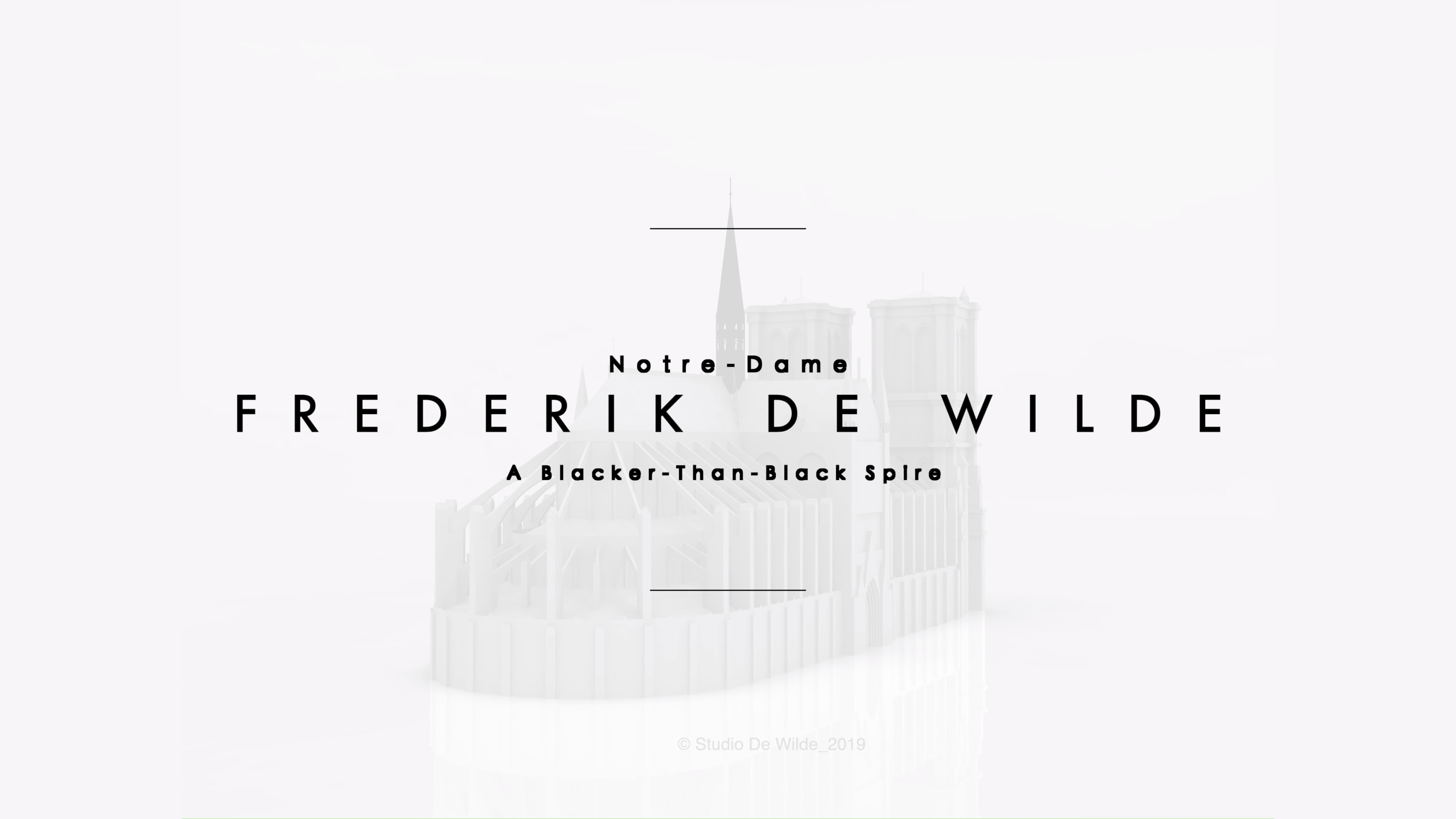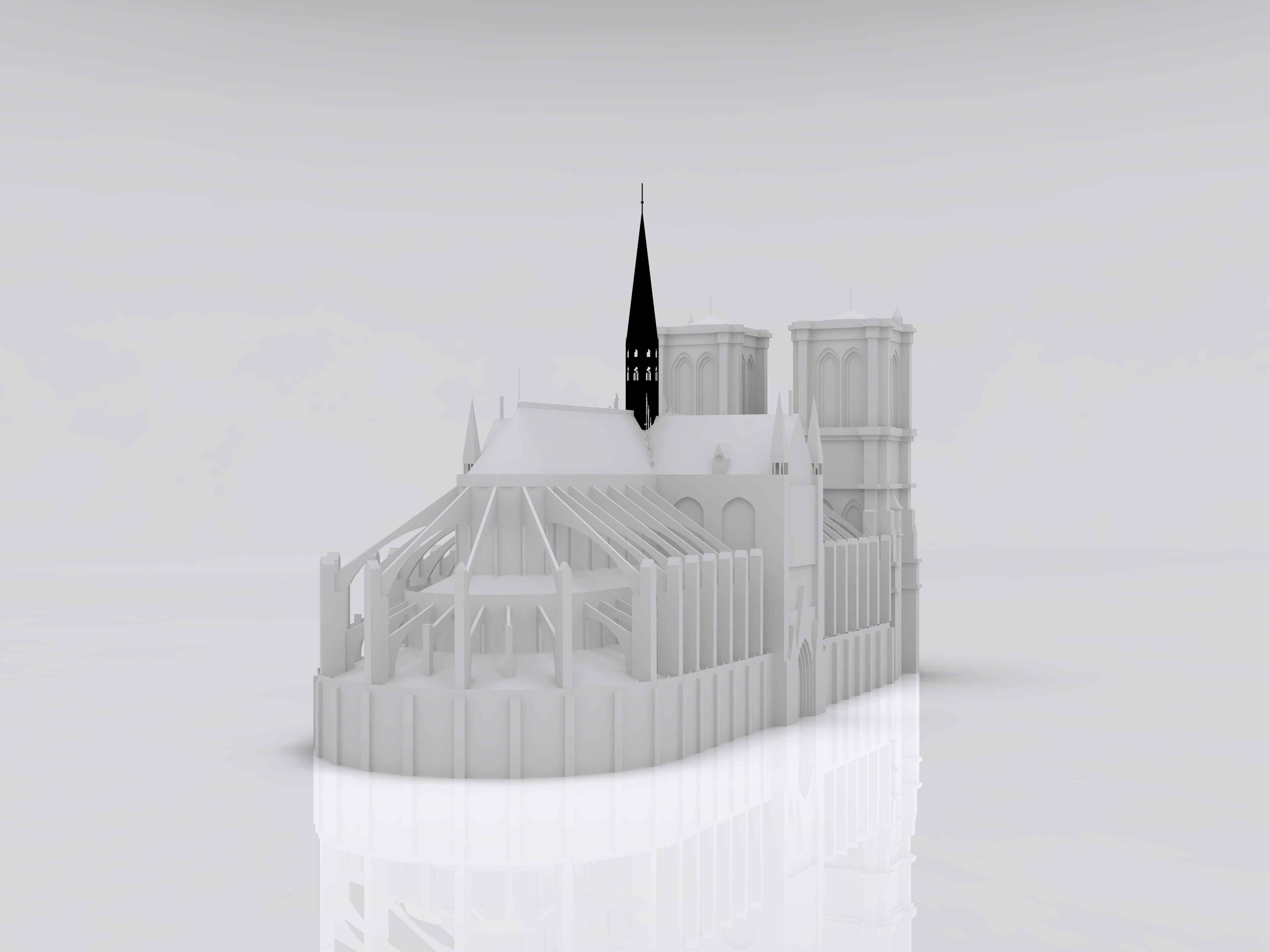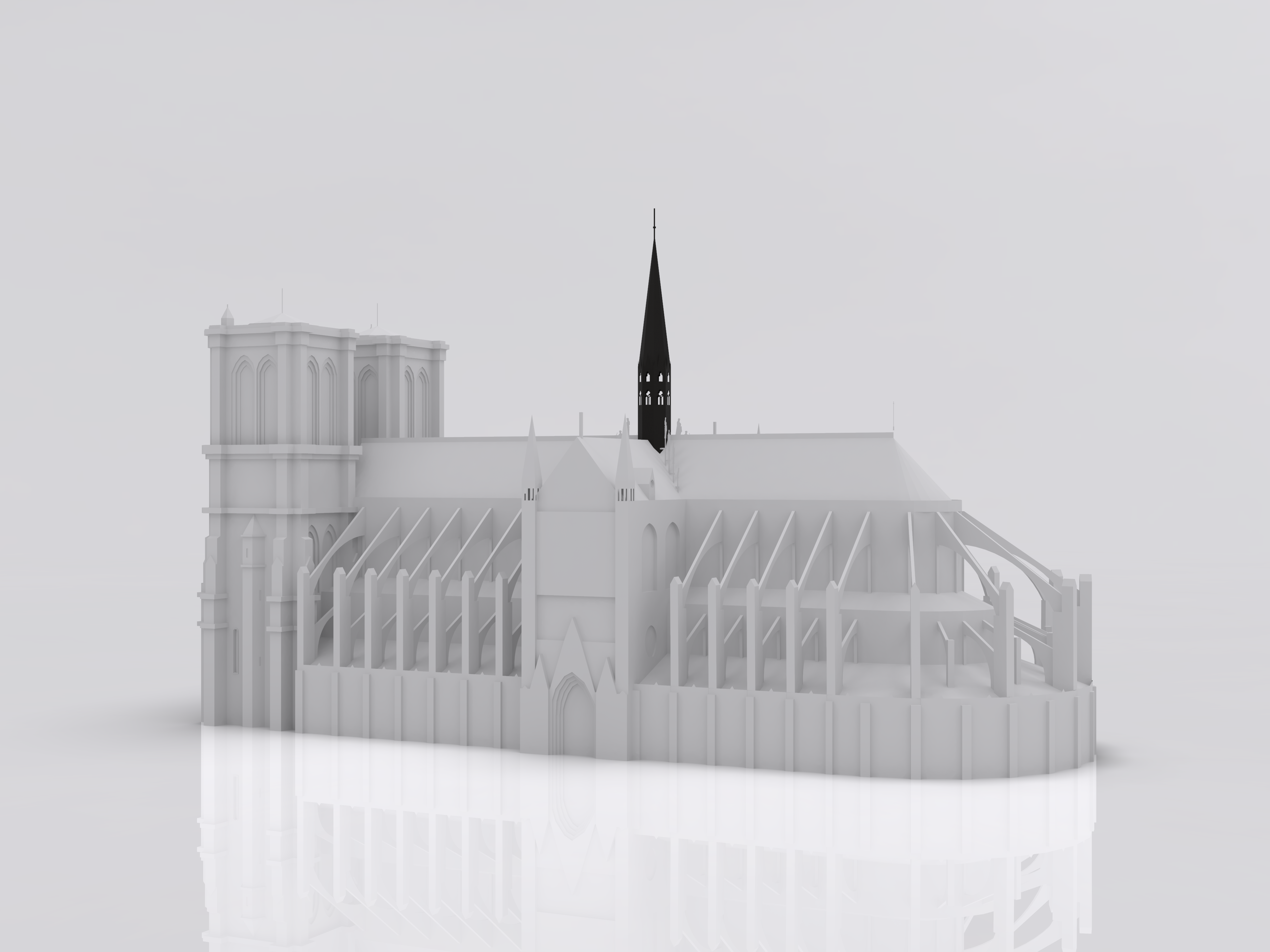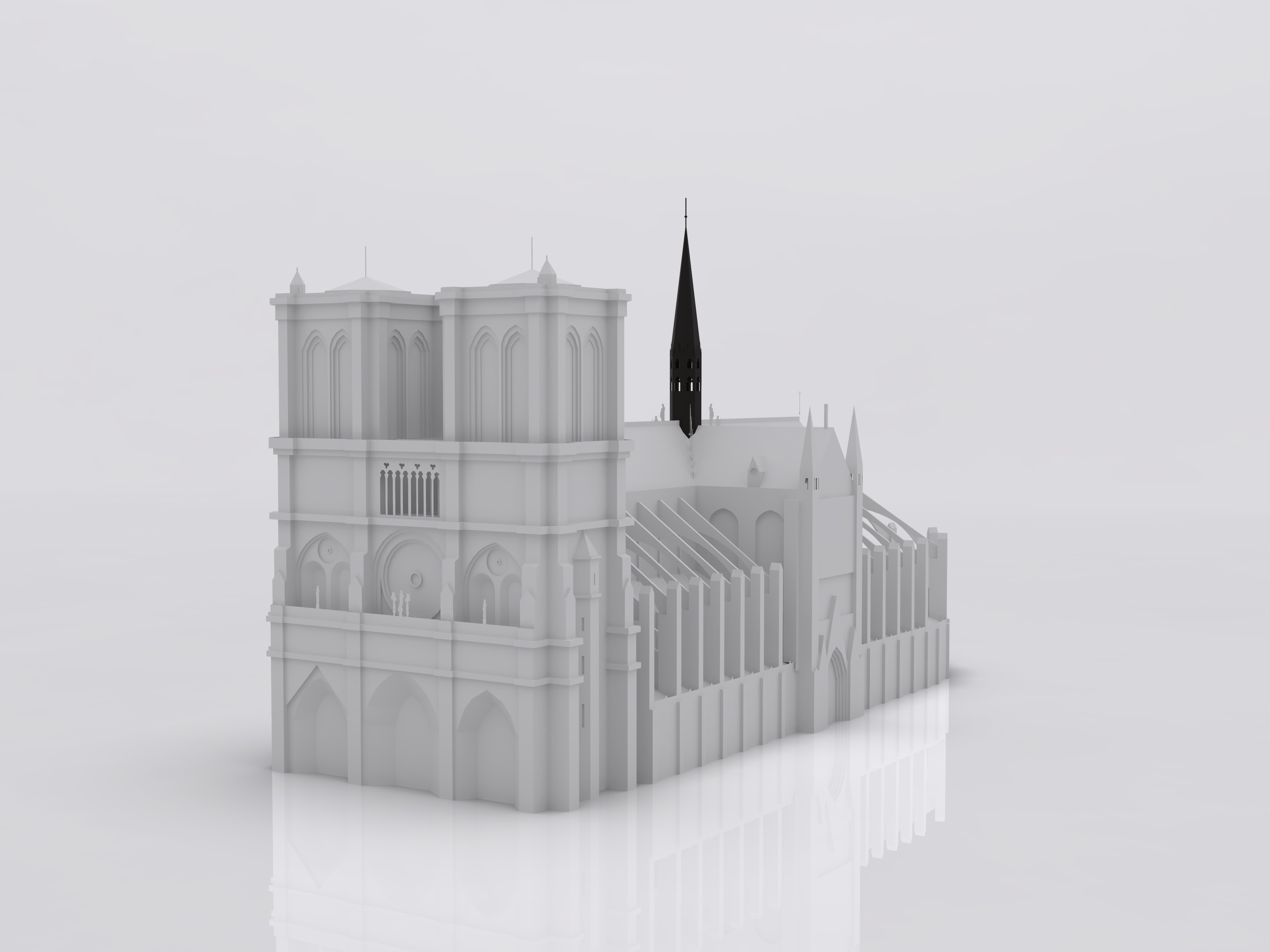A blacker-than-black spire for the Notre Dame.
Belgian artist Frederik De Wilde joins the global architectural contest to design a new Notre-Dame spire adapted to the techniques and challenges of our era with a blacker-than-black spire.
Artist comment:
“As a phoenix that rises from the ashes of Our Lady, the new spire should represent a trace of its drama and embody our common felt loss; making it palpable and felt whilst visually hiding. La Flèche should become a true 21st century contribution on the fringe of art, science and technology; A blacker-than-black spire challenging our perception whilst hovering between the analogue and the digital, presence and absence, seeing and non-seeing. La Flèche will be visually reduced to a blacker-than-black silhouette catching all light just like a perfect solar cell, reinforcing the green vision of the city of lights. Hope is kindled. My inspiration is drawn from the French artist Yves Klein whom said: “Only when an artist has the courage to dissolve into empty space, into the Void, will he be able to create something genuinely new, essential, yet undogmatic and potentially meaningful to all.”
Blacker than black – New ‘Flèche’ for the Notre Dame in Paris by Sofie Renap
History, emptiness, scars, memory, future
On Monday evening the 15th of April, the city of Paris held his breath when the cathedral Notre Dame burned down. The whole building was on fire, and when the steeple collapsed, the emotions ran very high. A careful sigh of relief went through the people when it wasn’t not the whole building that burned down. There was still some hope left. This ancient building that already carries many stories, has an extra story to tell now.
The stories start at the very beginning, when the cathedral was built in 1163. Only in the 19th century, the spire of 90 meters high was build, under the watchful eye of architect Eugène Viollet-le-Duc (1814-1879). From this moment on, the ‘Flèche’ was an indispensable part of the immemorial building. Paradoxically, the disappearance of the iconic steeple makes that it will never be forgotten. It will, forever, have a place in the memories of people, only the physical absence remains.
Characteristic about emptiness is that it arises by chance and unplanned, thence they make place for a new, also unplanned, future. By building a new steeple, the emptiness of the old one should be filled up, with enough remaining space for memories about how the ‘Flèche’ used to look. An emptiness arises in the past, and it carries a memory that is indelible.
Trying to convert something invisible as emptiness into something with volume, is a fragile task. ‘Casting the invisible’, moving the social memory to a physical object. Materially visualizing a loss ensures that the memory will stay alive (literally, in this case).
That leads to another paradox. Materially capturing emptiness causes a preservation of the image from the original early gothic architecture of the cathedral in the collective memory. It maintains the past, the old structure of the building.
A new steeple that’s blacker than black, can perfectly embody this loss. The color absorbs all the light, thereby almost no forms can be seen. Black emphasizes the absence of shapes and the former view. There is room for a memory of things that were, but becomes clear that what was, isn’t anymore.
From the moment the loss is materialized in this way, there is a new object, and every object casts a shadow. It supplies the double proof of what once was; it shapes the form of what is there now, but it cannot exist on its own. It can serve as the metaphor for the absence, as the secret shade of the presence. The divergent presence of the tower gives place to an elusive, but essential absence. When it’s dark, and the shadow is invisible, we imagine it unconsciously for the realism of the physical object.
The blacker-than-black ‘Flèche’ is like a scar on a place that holds a collective memory, where the scar manifests itself as the memory. The emptiness as an object in the city portrays the past, and encourages flashbacks. The unavoidable process of transience is underscored by the emptiness, the new steeple becomes the visualization of the passage of time.




